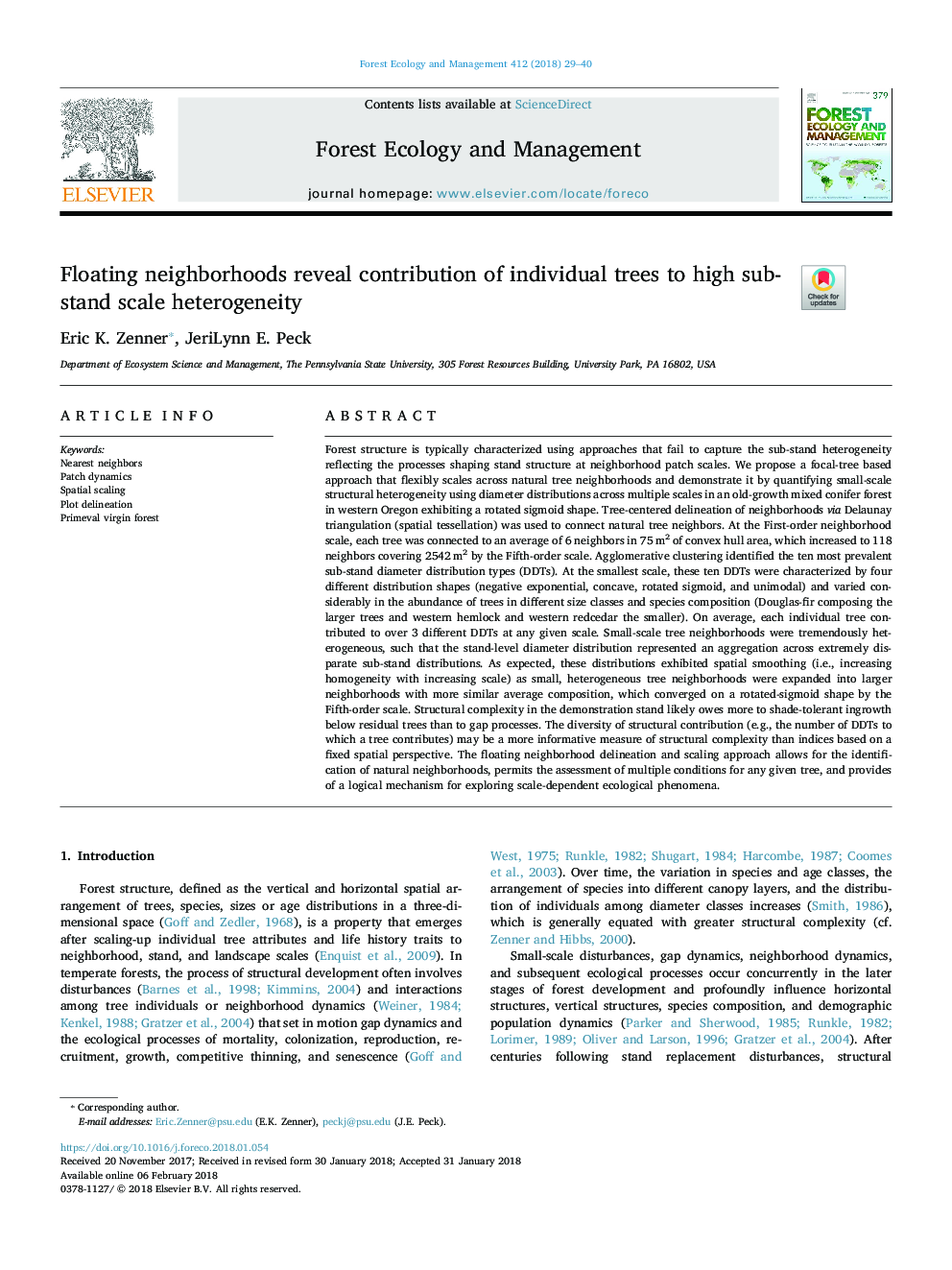| کد مقاله | کد نشریه | سال انتشار | مقاله انگلیسی | نسخه تمام متن |
|---|---|---|---|---|
| 6541803 | 1421346 | 2018 | 12 صفحه PDF | دانلود رایگان |
عنوان انگلیسی مقاله ISI
Floating neighborhoods reveal contribution of individual trees to high sub-stand scale heterogeneity
ترجمه فارسی عنوان
محله های شناور نشان دهنده سهم درختان به ناهمگنی در مقیاس نزولی است
دانلود مقاله + سفارش ترجمه
دانلود مقاله ISI انگلیسی
رایگان برای ایرانیان
کلمات کلیدی
نزدیکترین همسایگان، دینامیک پچ، مقیاس فضایی، ترسیم نقشه جنگل اولیه باکره،
موضوعات مرتبط
علوم زیستی و بیوفناوری
علوم کشاورزی و بیولوژیک
بوم شناسی، تکامل، رفتار و سامانه شناسی
چکیده انگلیسی
Forest structure is typically characterized using approaches that fail to capture the sub-stand heterogeneity reflecting the processes shaping stand structure at neighborhood patch scales. We propose a focal-tree based approach that flexibly scales across natural tree neighborhoods and demonstrate it by quantifying small-scale structural heterogeneity using diameter distributions across multiple scales in an old-growth mixed conifer forest in western Oregon exhibiting a rotated sigmoid shape. Tree-centered delineation of neighborhoods via Delaunay triangulation (spatial tessellation) was used to connect natural tree neighbors. At the First-order neighborhood scale, each tree was connected to an average of 6 neighbors in 75â¯m2 of convex hull area, which increased to 118 neighbors covering 2542â¯m2 by the Fifth-order scale. Agglomerative clustering identified the ten most prevalent sub-stand diameter distribution types (DDTs). At the smallest scale, these ten DDTs were characterized by four different distribution shapes (negative exponential, concave, rotated sigmoid, and unimodal) and varied considerably in the abundance of trees in different size classes and species composition (Douglas-fir composing the larger trees and western hemlock and western redcedar the smaller). On average, each individual tree contributed to over 3 different DDTs at any given scale. Small-scale tree neighborhoods were tremendously heterogeneous, such that the stand-level diameter distribution represented an aggregation across extremely disparate sub-stand distributions. As expected, these distributions exhibited spatial smoothing (i.e., increasing homogeneity with increasing scale) as small, heterogeneous tree neighborhoods were expanded into larger neighborhoods with more similar average composition, which converged on a rotated-sigmoid shape by the Fifth-order scale. Structural complexity in the demonstration stand likely owes more to shade-tolerant ingrowth below residual trees than to gap processes. The diversity of structural contribution (e.g., the number of DDTs to which a tree contributes) may be a more informative measure of structural complexity than indices based on a fixed spatial perspective. The floating neighborhood delineation and scaling approach allows for the identification of natural neighborhoods, permits the assessment of multiple conditions for any given tree, and provides of a logical mechanism for exploring scale-dependent ecological phenomena.
ناشر
Database: Elsevier - ScienceDirect (ساینس دایرکت)
Journal: Forest Ecology and Management - Volume 412, 15 March 2018, Pages 29-40
Journal: Forest Ecology and Management - Volume 412, 15 March 2018, Pages 29-40
نویسندگان
Eric K. Zenner, JeriLynn E. Peck,
